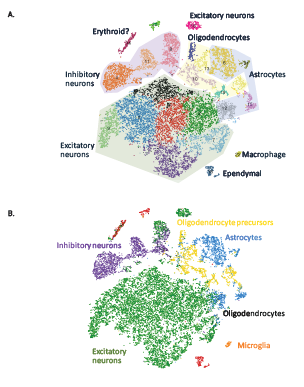Small RNAs are polymeric RNA molecules shorter than 200 nucleotides in length and are generally non-coding. However, they still have very important roles to play in biological systems and different types of diseases. Under the umbrella of small RNAs are microRNAs (miRNAs), which are about ~22 nucleotides in length and well conserved across species.
MicroRNAs are studied by many researchers because although they are non-coding RNA molecules, they are involved in post-transcriptional regulation of gene expression through both degradation and translational repression [1]. In cancer research specifically, miRNAs are studied, because they have been shown to regulate cancer-specific gene expression, and they are also present and stable in various biofluids [2]. This means that determining specific miRNA profiles may be a non-invasive and useful method for specific cancer diagnosis and prognosis.
Why choose sequencing for small RNA?
Although reverse transcription quantitative real-time polymerase chain reaction (RT-qPCR) is used as the gold standard for targeted miRNA analysis, if researchers want to study more than a few miRNAs, small RNA sequencing is the best alternative due to its non-targeted nature. This characteristic allows for simultaneous detection of novel miRNAs as well as other types of small RNA (i.e. small interfering RNA).
The disadvantage of small RNA sequencing is the bias that can be introduced in the extension and PCR steps. The former is where the very short cDNA (reversed transcribed from the original small RNA) is extended by ligation or polyadenylation, and the latter is where these cDNA molecules are amplified. Bias can occur during the extension step because the two adaptors used may have different affinities to target molecules. Bias can occur during PCR because the amplification efficiency is different for molecules of different lengths. Both may confound the results when trying to determine true levels of small RNAs.
There has recently been substantial effort to minimize these disadvantages, resulting in several different types of library prep kits released to market that have managed to reduce extension and PCR bias [1]. These kits reduce bias through different methods, and depending on your sample type and project goals, a specific kit may have an advantage over the others. Our small RNA-Seq partnering providers can help recommend the correct kit for you based on their experience and your own project goals.
What are the library prep and sequencing options?
There are multiple types of library preparation for small RNA sequencing, including two-adaptor ligation, randomized adaptor ligation, single adaptor ligation and circularization, unique molecular identifiers (UMIs), and polyadenylation and template switching [1]. Excluding the kits that use the original two-adaptor ligation method, each kit has its own method to reduce extension and PCR bias. Some commercial kits are also more targeted towards sequencing miRNAs instead of all small RNAs. Choosing the best kit will depend on your research goals.
For sequencing, the most common and cost-effective option is Illumina short-read sequencing. The vast majority of commercial library prep kits are compatible with Illumina platforms.
How can Genohub help?
Genohub’s small RNA sequencing partners are experts in every step of the small RNA and miRNA sequencing process, including extraction, library preparation, sequencing, and data analysis.
Our partnering providers can recommend the appropriate library prep kit and sequencing depth based on your specific project goals. They also have experience extracting from many different types of biological samples, such as human plasma, but they can work just as well with total or exosomal RNA samples that you extract yourself.
We know that each research project is unique, so we have partners who are also open to working with your custom samples and analysis needs! Get started today by letting us know about your small RNA sequencing project here: https://genohub.com/ngs/ .
References
- Benesova S, Kubista M, Valihrach L. Small RNA-Sequencing: Approaches and Considerations for miRNA Analysis. Diagnostics (Basel). 2021 May 27;11(6):964. doi: 10.3390/diagnostics11060964. PMID: 34071824; PMCID: PMC8229417.
- Gisela Storz, An Expanding Universe of Noncoding RNAs. Science 296, 1260-1263 (2002). DOI: 10.1126/science.1072249

